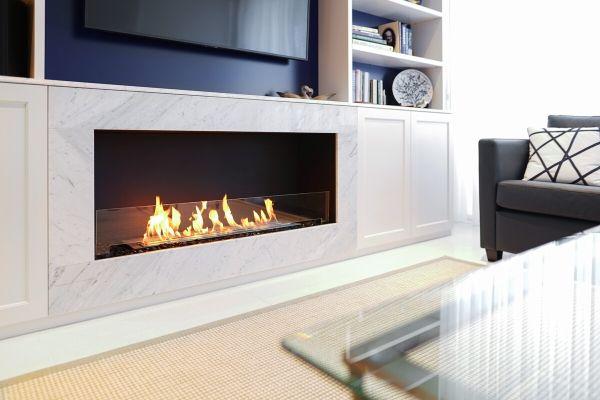In this article, we will present the bioethanol fireplaces, including their features and benefits.
What is Biofuel?
Bioethanol is a sustainable energy source used as a substitute for petrol. It is generally produced through a sugar fermentation process. Bioethanol is made from energy or fuel crops, that were specifically grown for this purpose. Corn, wheat and sugarcane are most commonly used in this process.
There are many benefits of using biofuel over other energy sources for your fireplace. Firstly, it is a much more ecological option, as it is carbon neutral and doesn’t produce any fumes. Furthermore, the smoke and accompanying smell are not present and the installation is fairly cheap.
There are a few options for your fireplace you could choose from. Let’s take a look at the advantage of using biofuel instead of these common choices.
- Pellets/wood
Most commonly used for fireplaces, the most significant advantage of using wood or pellets is the heat it produces. It is incomparable with other sources in this manner and we would recommend it to those who prioritise heat over other factors.
However, the wood also has several disadvantages. The first one is that they demand a lot of storage space, and require transport when purchased. Also, if you keep it outside your home, it can be very inconvenient to frequently go outside to get another load, especially in cold winter months. Furthermore, you will also have to clean the debris on a regular base. Last but not least, it requires the installation of a chimney, which is not an option for some homeowners.
- Gas
Gas is mostly used for its visual aspect, as it creates a more balanced flame that beautifies the entire room around the fireplace. Also, the design of the gas fireplaces itself has developed exponentially over the years and fits very well with a modern home. In the end, once it’s installed, you can operate it with a simple remote.
On the downside, gas produces carbon monoxide when burned. This compound can be very harmful to humans in a great number of ways. Additionally, it generates much less heat than other fireplaces which makes it a costly option in the long run.
- Biofuel
Biofuel is less common than the options mentioned above, but it may be a better alternative for several reasons. First of all, it combines the visual aspect of the gas with the heat efficiency of wood and pellets. Furthermore, it requires no external venting whatsoever, which decreases the price of the installation. In the end, we should not neglect the environmental factor, as this fuel doesn’t emit any carbon and thus is a beneficial choice for the safety of both humans and the environment.
Fireplaces
There are a few fireplace categories for those who opt for biofuel.
Portable fireplaces: Extremely convenient, especially for those who tend to move a lot or want to bring their fireplace to their holiday home. Most of the portable fireplaces feature a contemporary and simplistic design, that will fit nearly any home.
Wall mounted fireplaces: These fireplaces usually come in a monochromatic colour palette and are extremely minimalistic. No plugs, chimney or gas lines are required. They produce great heat and are a good option for those who want to warm up larger spaces.
Tabletops: This option is not principally designed for heating purposes, as tabletops usually measure only around 20×20 inches. However, similarly to electric heaters, they will warm up your room, while also being a great decorative addition to your coffee table.
All in all, we believe you won’t miss if you opt for bioethanol fireplaces. They are economical, come in many options and in the end, are the safest option for both your family and nature.


Comments are closed.